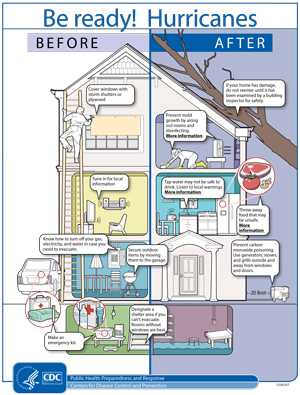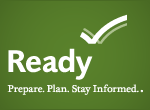Get Your Family, Home, and Car Ready

If a hurricane might be headed toward you, you need to prepare. You’ll want to learn about hurricane alerts, prepare your family and pets, and get your car and home ready for the storm.
Know the difference between a hurricane “watch” and “warning”

Listen for National Weather Service alerts on TV or radio or check for them online. There are two kinds of alerts.
- A hurricane watch means that there’s no hurricane yet, but weather conditions could cause one. Experts will announce a hurricane watch 48 hours before they think dangerous winds will start.
- A hurricane warning is more serious. It means a hurricane has already started or is just about to start.
For more information about hurricane watches and warnings, check out the National Weather Service’s Hurricane Center. If you hear that there’s a hurricane watch or warning in your area, you can take steps to get ready.
Get your family ready
- Go over your emergency plan with your family. Make sure you have the supplies you need.
- Keep checking for updates about the storm. Watch TV, listen to the radio, or check online.
- Listen for disaster sirens and warning signals.
- Pack important documents (like wills or passports) with you.
- Call the hospital, public health department, or the police about special needs. If you or a loved one is older or disabled and won’t be able to leave quickly, get advice on what to do.
- Check your carbon monoxide detector. Carbon monoxide poisoning can be deadly.
Put pets and farm animals in a safe place
Keep in mind emergency shelters and many hotels may not let you bring animals with you if you need to evacuate. Ask your local public health department if pets are allowed in shelters. Read more about pet safety.
Get your home ready for the storm
- Clear your yard. Make sure there’s nothing that could blow around during the storm and damage your home. Move bikes, lawn furniture, grills, propane tanks, and building material inside or under shelter.
- Cover up windows and doors outside. Use storm shutters or nail pieces of plywood to the window frames to protect your windows. This can help keep you safe from pieces of shattered glass.
- Be ready to turn off your power. If you see flooding, downed power lines, or you have to leave your home, switch it off.
- Fill clean water containers with drinking water. You’ll want to do this in case you lose your water supply during the storm. You can also fill up your sinks and bathtubs with water for washing.
- Check your CO detector to prevent CO poisoning.
- Lower the thermostat in your refrigerator and freezer to the coolest possible temperature. If your power goes out, your food will stay fresh longer. Read more about food safety after a storm.
Make an emergency car kit
Always keep an emergency kit in your car in case you need to leave quickly during a hurricane. Make sure you include:
- Food that doesn’t go bad (like canned food)
- Flares
- Jumper cables (sometimes called booster cables)
- Maps
- Tools, like a roadside emergency kit
- A first aid kit and instructions
- A fire extinguisher
- Sleeping bags
- Flashlight and extra batteries
- Having a GPS — either in your car or on your smartphone — can help during an emergency too.
Visit Ready.gov for more information on emergency plans and supply kits.
Make sure your car is ready
- Fill your car’s gas tank. You may also want to consider making plans with friends or family to get a ride.
- Double check your car’s emergency kit.
- Move cars and trucks into your garage or under cover.
What’s next?
- Learn more about what to do during a hurricane, check out Evacuate or Stay at Home.
- Page last reviewed: September 5, 2017
- Page last updated: September 7, 2017
- Content source:
- National Center for Environmental Health (NCEH); Agency for Toxic Substances and Disease Registry (ATSDR); Office of Noncommunicable Diseases, Injury, and Environmental Health (ONDIEH); National Center for Chronic Disease Prevention and Health Promotion (NCCDPHP); National Center for Birth Defects and Developmental Disabilities (NCBDDD)


 ShareCompartir
ShareCompartir


